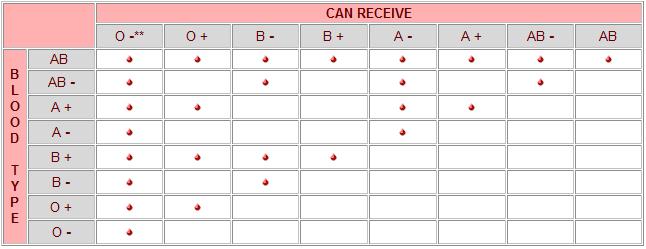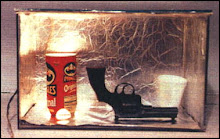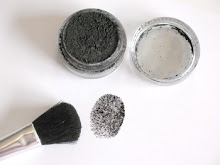Saturday, October 24, 2009
History of Fingerprints
Fingerprints are unique features that everyone has. The reason why they're unique is because every person's fingerprint is different. While your body grows and your characteristics change, your fingerprints do not. That's the reason why they have been used to accurately identify criminals for over 100 years.
Important People:
Malpighi (1686): He discovered our fingers had loops, ridges, and spirals in them.
Faulds (1880): He started studying skin-furrows after noticing finger marks on prehistoric pottery. He recognized the means of identification and created a way to classify them.
Bertillion (1882): He developed a system called Anthropometry or the Bertillon System. It classified people using different parts of a person's body.
Vucetich & Galton (1892): Juan Vucetich made the first fingerprint investigation. He identified Francis Rojas as the woman who murdered her own 2 sons and tried to save herself by cutting her own throat. Unfortunately for her, a bloody print of her hand was left on a door. Sir Francis Galton wrote a book called, "Fingerprints", which talked about the uniqueness and permanence of fingerprints.
Thursday, September 24, 2009
Types of Fingerprints
Thursday, September 10, 2009
Analysis of Hair/Fiber Lab
 We discovered that every type of hair is different. Asian male hair has a spiny cuticle, a black medulla and a dark brown cortex. Black male hair is more curvy and has a brown cortex. White male has a yellowish cortex, a black and smooth cuticle, and a light colored medulla. Dog hair has a crizzled cuticle and lines in the medulla. Then the cat has a crizzled cuticle, a rough and edgy cortex and it was hard to actually see the medulla.
We discovered that every type of hair is different. Asian male hair has a spiny cuticle, a black medulla and a dark brown cortex. Black male hair is more curvy and has a brown cortex. White male has a yellowish cortex, a black and smooth cuticle, and a light colored medulla. Dog hair has a crizzled cuticle and lines in the medulla. Then the cat has a crizzled cuticle, a rough and edgy cortex and it was hard to actually see the medulla.We also had an unknown hair sample that we had to identify using the information we gathered on different types of hair. My guess was the black male hair. The reason is because it had a darkish brown cortex, visible medulla, and a smooth cuticle. So this cancels out the Asian and cat hair, which are both brown.
Comments and Analysis on Blood Lab

As you can see, in the picture above we tested type A blood. When we added the blue liquid to the left sample of blood, it formed a precipitate. However, when we added the yellow to the other A type sample, it remained clear. It further proves that the blood is Type A. The reason is because for O, the blood is to remain clear when you add the blue and yellow, the A is supposed to form a precipitate from the blue, but not from the yellow, the B is not supposed to form a precipitate from the blue, but is from the yellow, and finally the AB forms precipitates on both when the blue and yellows are added.
Tuesday, September 8, 2009
Crime Scene Investigation Story
- Footprint was from the rain and mud outside.
- Blood was from glass cutting.
- Fingerprint was from the glass that Ralph broke.
Data of Crime Scene Investigation
Exh. 1A: Piece of hair
Exh. 2A: Second piece of hair
Exh. 3A: Ripped up note
Exh. 4A: Blood
Exh. 5A: Fingerprint on glass surface
Exh. 6A: Mike Kelly's wallet
We then proceeded to use the techniques we learned to analyze the data. This is what we discovered:
- 1A: Piece of hair: This hair we identified as black male using microscopy.
- 2A: Second piece of hair: We identified this sample as cat hair using the same method as above.
- 3A: Ripped up note: There was some pieces of a ripped up note. Once we put them together, we found out that it said, "I have your diamond ring." We then compared the handwriting to the suspects' handwriting and found that it matched up to Ralph Johnson.
- 4A: Blood: We used a blood typing kit to identify the blood we found. It turned out to be Type A, which suspects' Jenny Cho and Ralph Johnson had.
- 5A: Fingerprint on glass surface: We identified this to be an ulnar loop, which Mike Kelly had.
- 6A: Mike Kelly's Wallet: Had no money, but had an ID.
Crime Scene Investigation
Monday, September 7, 2009
Positive and Negative Blood
Blood Mixing and Transfusions
Here is a chart of all the possible blood transfusions:

Major Types of Blood
Blood Type A: "A antigens on the surface of your red blood cells and B antibodies in your blood plasma."




Blood Type B: "B antigens on the surface of your red blood cells and A antibodies in your blood plasma."

Blood Type AB: "Both A and B antigens on the surface of your red blood cells and no A or B antibodies in your blood plasma. "

Blood Type O: "Neither A or B antigens on the surface of your red blood cells, but both A and B antibodies in your blood plasma."

Techniques Used to ID Hair/Fiber
History of Hair/Fiber Analysis
Inaccuracy in Handwriting
1. Criminals can change their handwriting.
2. Criminals may type their note.
3. The criminal may have forced someone else to write their note.
4. The criminal have have used something else to write with rather than a pen or pencil.
Wednesday, August 26, 2009
Different Shapes/Patterns of Fingerprints
The basic shapes of fingerprints are arches, loops, and whorls. Though, there are many different types of them.
There's more information on these different types here: http://onin.com/fp/fmiru/fppatterns.gif-
Sunday, July 26, 2009
Techniques/Chemicals used to Develop Fingerprints
For nonabsorbent and hard surfaces, such as glass or tiles, you use powder. When choosing a powder to use for developing fingerprints, you’ll get a better result if you use a color that contrasts with your surface. For example, when you’re trying to develop a fingerprint on a window, you use a dark powder. Charcoal or black carbon would work in this situation. Likewise, when developing a print on a dark surface you use a light powder such as baby powder. After applying the powder, very gently blow and brush off the powder. Then you just stick a piece of tape on the print and slowly take it off. There should be an imprint on the tape.
For porous and smooth surfaces, like paper or cardboard, you use certain chemicals. One method is using iodine crystals. The reason why iodine is used is because it sublimes, meaning it can go from solid to vapor without turning into liquid. You put the item with the fingerprint on it in a closed space with the iodine crystals. Then you heat the crystals until it vaporizes. The vapor will stick onto the outlines and ridges of the fingerprint. The print will disappear after a few moments so you can either take a picture of it or spray it with a 1% solution of starch in water, which will turn it blue and make it last much longer. Another chemical that can be used is silver nitrate. After applying the silver nitrate on an object, you put it under an ultraviolet light and a reddish-brown or black outline of the fingerprint should appear. Ninhydrin is another chemical that can be used. It is found in acetone and ethyl alcohol. You use a spray can and spray the suspect material and a print should appear after a few hours. The time can be shortened if you heat it since heating something will increase the rate of its reaction. The last chemical that can be used is super glue. Heating the super glue will make the cyanoacrylate ester found in it stick to the fingerprint.
Friday, June 26, 2009
Citations
Fingerprints:
http://www.bxscience.edu/publications/forensics/articles/fingerprinting/f-fing03.htm
http://hubpages.com/hub/fingerprinting
http://www.onin.com/fp/fphistory.html
http://www.aladdinusa.com/documentationservices/fingerhistory.htm
http://en.wikipedia.org/wiki/Fingerprint#Plastic_prints
Hair/Fiber:
http://www.policensw.com/info/forensic/forensic7a.html
Blood:
http://nobelprize.org/educational_games/medicine/landsteiner/readmore.html
Tuesday, January 27, 2009
History of Handwriting
Gordon Allport (1930): Had 3 assumptions on handwriting: 1. personality is consistent; 2. movement is expressive of personality; and 3. the gestures and other expressive movements of an individual are consistent with one another.
Sunday, January 25, 2009
Techniques or Indicators Scientists Use to Identify Handwriting or Forgeries
1. Line quality: Do the letters flow or are they written with very intent strokes?
2. Spacing of words and letters: What is the average space between words and letters?
3. Ratio of height, width, and size of letters: Are the letters consistent in height, width, and size?
4. Lifting pen: Does the author lift his or her pen to stop writing a word and start a new word?
5. Connecting strokes: How are the capital letters connected to lower-case letters?
6. Strokes to begin and end: Where does the letter begin and end on a page?
7. Unusual letter formation: Are there any letters written with unusual slants or angles? Are some letters printed rather than written in cursive?
8. Pen pressure: How much pen pressure is applied on upward and downward strokes?
9. Slant: Do letters slant to the left or right? If slant is pronounced, a protractor may be used to determine the degree.
10. Baseline habits: Does the author write on the line or does the writing go above or below the line?
11. Fancy writing habits: Are there any unusual curls or loops or unique styles?
12. Placement of diacritics: How does the author cross the t’s or dot the i’s?
Tuesday, January 20, 2009
In-Class Handwriting Forgery Practice

Then we had another person freehand draw it.

Then finally someone traced it.

After that activity, we moved onto another. Mr. Kelly had us write our own fake checks with the name, "Joseph John Doe." Then we tore them up to pieces and put them into envelopes. Mr. Kelly then came around and picked them up. He then gave us a different envelope. We had to put the check back together and find out whose check it belonged to using the 12 techniques of handwriting that we had learned earlier.

Monday, January 19, 2009
Citations for Handwriting
http://hubpages.com/hub/6-Common-Concerns-About-Handwriting-Analysis-The-Truth-Revealed
http://






